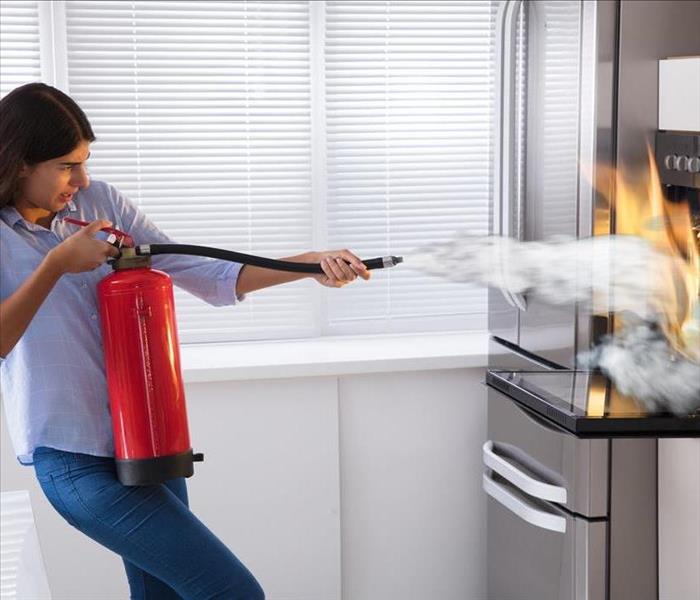Home Fire Safety Tips
8/19/2021 (Permalink)
 If you can't control the fire with a fire extinguisher in your home in Clearfield, UT, call professionals to avoid further damages.
If you can't control the fire with a fire extinguisher in your home in Clearfield, UT, call professionals to avoid further damages.
Every homeowner likes to believe that his or her house is safe from fires. A fire in your home in Clearfield, UT, can break out much more easily and quickly than you think, though. The smallest error, such as leaving a candle burning too long or forgetting a burner on the stove is on, can ignite a larger flame in no time. When this happens, you should have the security of knowing that every family member knows the proper procedure for handling it. This starts by teaching everyone how to use a fire extinguisher.
The PASS Method
The moment an emergency happens is an unfortunate time to discover that you don't know how to address it. It doesn't do you any good to have a fire extinguisher near your kitchen if you don't know how to use it. Fortunately, all it takes is following an easy four-step process:
Pull - Take the pinout of the top of the extinguisher to unlock it and ready it for use.
Aim - Point the nozzle at the base of the fire.
Squeeze - Apply pressure on the handle to release the agent inside the extinguisher.
Sweep - Slowly but steadily move the stream from the nozzle back and forth along the base of the fire.
If done correctly, the PASS method should put out most small fires that occur in your home. If the flames still persist after you have emptied the canister of the fire extinguisher, don't reach for another one to try again. It's time to let the professionals take over. Call 911 and evacuate the house.
The Right Extinguisher
Not all fires are the same, so it makes sense that different extinguishers would need to hold different types of agents. When you are choosing the right fire safety equipment for your home, look at the ratings. An "A" rating means it is most useful for trash, paper, and wood fires. A "B" rating means that it contains an agent that works best on flammable liquids. A "C" rating is what you need for areas where electrical fires are possible. According to fire damage mitigation experts, the best extinguisher to fight a kitchen fire will have at least a "B-C" rating, if not all three.
The Best Prevention
One of the goals of fire safety is to prevent as much fire damage to your home as possible. Of course, the best prevention is to avoid circumstances that cause the fire in the first place. Since the kitchen is one of the most common places where home fires occur, it's imperative that everyone who uses the kitchen understands basic safety measures. For example, remember to turn the oven and stove off when you're not using them. Don't keep items on top of the stove that are likely to ignite. Clean up oil and grease messes as soon as they occur.
Having a fire extinguisher handy in every area of your home is an essential part of any solid fire safety plan. If you can't prevent a fire altogether, knowing how to handle it quickly and efficiently is the next best option.



 24/7 Emergency Service
24/7 Emergency Service